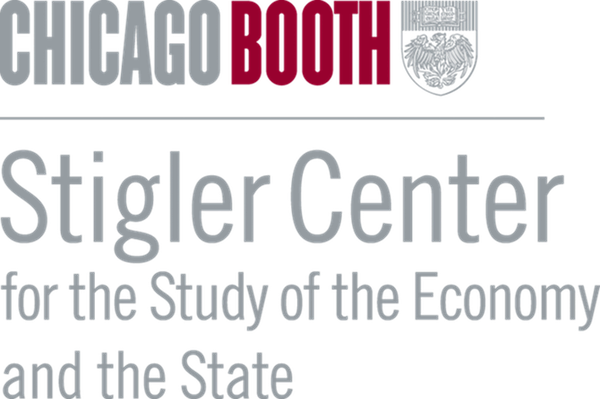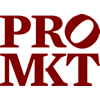Since 1993 the American enforcers have claimed that they can directly protect firms’ competition to innovate. And the European Commission, which at first acknowledged that it protected competition in Future Markets, markets for products which do not exist yet, later claimed that it too can directly protect firms’ competition to innovate. In their new, finalized 2023 Merger Guidelines, the American enforcers now not only acknowledge that they protect competition in Future Markets, but say that they will do so aggressively. And since the Americans acknowledge that they protect competition in Future Markets the Europeans should do so as well—again.
Editor’s Note: This article was updated on January 2, 2024 to reflect the changes made from the draft to the final 2023 Merger Guidelines.
In 15 articles, including three in ProMarket, I explain that whenever competition authorities, in Europe or the United States, claim they directly protect competition to innovate, they actually protect competition in Future Markets, markets for products at least some of which do not exist yet. And to protect competition in Future Markets, I have explained, the authorities apply the Future Markets Model.
Starting in 1993 in General Motors/ZF Friedrichshafen, the American enforcers claimed they could directly regulate competition to innovate. They could do so, they said, by finding Innovation Markets, markets in which innovation was itself the product. The American enforcers repeated this claim in their 1995, and subsequent, licensing guidelines. And, as I show in Innovation Markets in Europe, during this period the European Commission explicitly said it protected competition, not in Innovation Markets, but in Future Markets.
The American Horizontal Merger Guidelines also claimed the enforcers could directly protect competition to innovate. The 2010 Guidelines, in Section 6.4, said the enforcers could do this, claiming, among other things, that the enforcers could evaluate a firms’ capabilities and incentives to innovate. And in 2017, the European Commission, in Dow/DuPont, developed a similar methodology, saying it could also evaluate a firm’s capabilities and incentives to innovate as it protected competition in what it called an Innovation Space.
I show in From Innovation Markets to Innovation Spaces in Europe: A New Phrase is Not Innovation that when the European Commission claims it protects competition in an Innovation Space, it actually protects competition in a Future Market. And I show in The European Commission Finds, not Innovation Spaces, but Future Markets, that when the European Commission claims to apply its Innovation Space methodology it actually applies the Future Markets Model.
Now, in the finalized 2023 Merger Guidelines the American enforcers released on December 18, 2023, they actually acknowledge that they protect competition in Future Markets. And they acknowledge that to protect competition in Future Markets they apply the Future Markets Model. Section 4.2.E of the finalized Guidelines, entitled “Considerations for Innovation and Product Variety Competition,” shares essentially the same title as Section 6.4 of the 2010 Guidelines, but, instead of extensively describing how the enforcers can analyze a firm’s capabilities and incentives to innovate, this new section essentially lays out in paragraph form the four questions the Future Markets Model asks. The final Guidelines also, consistent with the Future Markets Model but in contrast to the 2010 Guidelines, do not say that a merger of firms trying to develop products which may compete in the future could generate significant efficiencies or similar benefits.
The four questions of the Future Markets Model are embedded in the new Guidelines’ explanation of how the enforcers protect competition to innovate. The 2023 Guidelines thus essentially say that to protect competition to innovate the enforcers will protect competition in Future Markets. And it says that to do so they will apply the Future Markets Model.
The Future Markets Model, which I explain in, among other places, Illumina/Grail: Using the Future Markets Model To Ask the Right Question, asks four questions:
A. Does a current product exist?
B. How many firms are trying to develop a future product?
C. For each possible future product, is it sufficiently developed that the authority will consider it a possible future product?
D. How broad will the authority define the Future Market? Will the authority consider future products which are similar, but not identical, as future competing products?
Section 4.2.E of the Guidelines begins:
Firms can compete for customers by offering varied and innovative products and features, which could range from minor improvements to the introduction of a new product category. Features can include new or different product attributes, services offered along with a product, or higher-quality services standing alone. Customers value the variety of products or services that competition generates, including having a variety of locations at which they can shop.
To perform the analysis this paragraph requires, an enforcer must answer questions A and C of the Future Markets Model. The enforcer must determine if the relevant product (which the Future Markets Model explicitly says could be a service) is in some way an “improvement” or “new,” and thus different from existing products. And implicitly, the enforcer must decide if the relevant product is sufficiently developed that it will consider it a “product.” (I discuss distribution, which does not relate to new products, below.)
The second paragraph of this section says:
Offering the best mix of products and features is an important dimension of competition that may be harmed as a result of the elimination of competition between the merging parties.
This paragraph requires an enforcer to answer questions B and D of the Future Markets Model. This paragraph requires the enforcer to determine if the products the relevant firms are making, or trying to make, are sufficiently similar that they compete against each other. And it requires the enforcer to decide if such a small number of products compete in the market that the transaction, by eliminating a competitor, will harm competition in the Future Market.
The third paragraph of the section adds detail, but little substance, to the second paragraph. It says:
When a firm introduces a new product or improves a product’s features, some of the sales it gains may be at the expense of its rivals, including rivals that are competing to develop similar products and features. As a result, competition between firms may lead them to make greater efforts to offer a variety of products and features than would be the case if the firms were jointly owned, for example, if they merged. The merged firm may have a reduced incentive to continue or initiate development of new products that would have competed with the other merging party, but post-merger would “cannibalize” what would be its own sales. A service provider may have a reduced incentive to continue valuable upgrades offered by the acquired firm. The merged firm may have a reduced incentive to engage in disruptive innovation that would threaten the business of one of the merging firms. Or it may have the incentive to change its product mix, such as by ceasing to offer one of the merging firms’ products, leaving worse off the customers who previously chose the product that was eliminated. For example, competition may be harmed when customers with a preference for a low-price option lose access to it, even if remaining products have higher quality.
This third paragraph thus explains in greater detail the harm a merger may cause if it substantially lessens competition in a Future Market. Firms that would otherwise have competed against each other would, due to the merger, not do so. The merged firm would have less of an incentive to develop and sell new, better, innovative products. This is true, but obvious.
The fourth paragraph says:
The incentives to compete aggressively on innovation and product variety depend on the capabilities of the firms and on customer reactions to the new offerings. Development of new features depends on having the appropriate expertise and resources. Where firms are two of a small number of companies with specialized employees, development facilities, intellectual property, or research projects in a particular area, competition between them will have a greater impact on their incentives to innovate.
The first part of the first sentence contains the remnants of the more elaborate claims Section 6.4 of the 2010 Guidelines made regarding the enforcers’ abilities to analyze a firm’s capabilities. As I explain in greater detail in From Innovation Markets to Innovation Spaces in Europe: A New Phrase is Not Innovation, if a product is sufficiently developed that a competition authority will consider it a “product,” then the authority will conclude that the firm making the product is capable. This paragraph also repeats the obvious fact that for a firm to compete in a Future Market it must, at a minimum, be able to make a future product. (In fact, as I explain in The Future Markets Model Explains Meta/Within: A Reply to Herb Hovenkamp, to compete in a Future Market a firm must be trying to make a future product.) The paragraph also says that for a Future Market to be competitive a sufficient number of firms must compete in the market.
The fifth and final paragraph of the section says:
Innovation may be directed at outcomes beyond product features; for example, innovation may be directed at reducing costs or adopting new technology for the distribution of products.
This paragraph is undoubtedly correct, but the situations this paragraph describes do not involve new products. These situations are therefore, regarding Future Markets, irrelevant.
Finally, leaving no doubt that the Guidelines acknowledge that the enforcers protect competition in Future Markets, Section 4.3.D.7, entitled “Market Definition When There is Harm to Innovation,” says:
When considering harm to competition in innovation, market definition may follow the same approaches that are used to analyze other dimensions of competition. In the case where a merger may substantially lessen competition by decreasing incentives for innovation, the Agencies may define relevant antitrust markets around the products that would result from that innovation, if successful, even if those products do not yet exist. In some cases, the Agencies may analyze different relevant markets when considering innovation than when considering other dimensions of competition. (Emphasis mine)
Most importantly, after the phrase in parenthesis the Guidelines, in footnote 91, cite Illumina v. Grail. This is the first case in which any court has ever found that an enforcer may use the Clayton Act to protect competition in a Future Market. And since not only have the enforcers now said they will protect competition in Future Markets, but a court, the Fifth Circuit no less, has said that they have the authority to do so, the enforcers will now certainly protect competition in Future Markets.
Yet, what is most strikingly missing from the Guidelines is any discussion of the policy the enforcers will adopt as they answer the questions the Guidelines, or the Future Markets Model, ask. The Guidelines do not explain how the enforcers will decide whether or not new products which are similar, but not identical, compete against each other. The Guidelines also fail to explain how many firms must compete in a Future Market to make that market competitive. The Guidelines thus imply what the Future Markets Model says explicitly: the enforcers must adopt a policy, and must answer these questions either aggressively, or not.
While the Guidelines do not say so explicitly, they imply that the enforcers will answer these questions aggressively. The Guidelines do so, first, by failing to acknowledge that a relevant merger could generate innovation efficiencies. If the enforcers do not acknowledge efficiencies, then, probably, the enforcers will be more inclined to find that a transaction will harm competition in a Future Market.
Second, the Guidelines recognize that the Fifth Circuit has now said that the enforcers have the authority to protect competition in Future Markets. Since the enforcers now have the specific authority to do this, one can expect them to do so aggressively. I explain this in greater detail in Refining Future Potential Competition: The doctrine allowing courts to protect innovation, and also in a shorter article, Illumina v. FTC: The Clayton Act Protects Competition in Future Markets.
Third, the Guidelines, in Section 2.6.A, say the enforcers will protect nascent competition. As I explain in Nascent Competition and Transnational Jurisdiction: The Future Markets Model Explains the Authorities’ Actions, nascent markets are simply Future Markets in which one large firm and one small firm are trying to develop the relevant future products.
Fourth, what the enforcers only implied in the Guidelines they said much more explicitly when the Federal Trade Commission, on June 27, 2023, proposed new Hart-Scott-Rodino premerger notification rules. The fourth of the FTC’s six proposed rule changes would require firms to provide extensive information regarding what the proposed rules themselves call pipeline products. Thus these proposed rule changes say, more or less explicitly, that the enforcers will pay close attention to the products merging firms are developing, and will carefully consider a merger’s possible impact on competition in a Future Market. And if the enforcers are paying close attention to Future Markets, then they will probably aggressively answer the questions the Guidelines ask, which are the same questions the Future Markets Model asks. The enforcers will protect competition in Future Markets aggressively.
Thus the American enforcers are clearly saying that they will apply the Future Markets Model, and will do so aggressively. The European Commission not only also applies the Future Market Model, but at one time even acknowledged that it protected competition in Future Markets. Since the European Commission acknowledged that it did so, the rules of logic have not changed. The European Commission should thus join its American colleagues and acknowledge the truth, that it too protects competition in Future Markets.
Articles represent the opinions of their writers, not necessarily those of the University of Chicago, the Booth School of Business, or its faculty.






